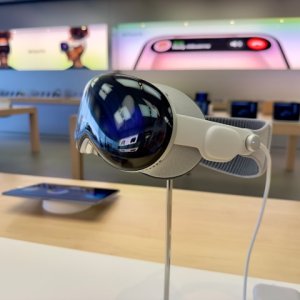
Digitalization Advances but Pace Remains Uneven
Digitalization is key to ensuring access to healthcare. Industry players and public organisms must overcome technological barriers to make the most of the possibilities offered by Big Data for better management of institutions and patient health.
Well-designed and effectively used information infrastructure has the potential to become the lynchpin of quality for successful healthcare systems globally, according to the OECD. However, the industry lags other sectors in adopting the tools that could elevate its management and delivery of care. In Mexico, where budget cuts to the public health system have hampered spending, it is critical that Big Data and high-tech solutions begin playing a greater role in the sector.
The OECD report, Mexico’s Health System Review 2016, highlights some of the core uses of well-managed health data: evaluation, monitoring, personalization of care, ensuring of continuity, support provision, purchase and prediction of care needs. Consulting firm Deloitte says connected health or technology-enabled care (TEC), which refers to the merging of health technology, digital media and mobile devices, is capable of providing costeffective alternatives at a time of increasing demand in health and social care.
Unfortunately, the health industry is behind other sectors in terms of digitalization, not just in Mexico but internationally. Research from the McKinsey Global Institute (MGI) looked at digitalization in different economic sectors in the US. The results showed the workforce of companies in leading sectors are 13 times more digital than the rest of the economy. An article written by McKinsey partners and published in the Harvard Business Review in 2016 pointed to the disparity between the sophisticated use of high-tech in specialized health areas and the lack of digital fluency in others: “Many healthcare organizations use incredibly sophisticated technology in diagnostics and treatment but substantial parts of their workforce use only rudimentary or no technology. Fewer than 20 percent of payments to healthcare providers and their suppliers are done digitally, for example.”
In the case of Mexico, it has been almost 15 years since the implementation of NOM - 024, which requested the application of electronic medical record systems in health services providers. A decade and a half later, the pace of digitalization at healthcare institutions remains uneven. The OECD discovered that data is generated only at various points in the Mexican system, creating a fragmented approach. According to Guillermo Ferrari, General Manager of Eseotres, which provides digital-imaging solutions, IMSS carries out between 19 and 20 million image studies every year, using 1.5 million square meters of Eseotres’ analog film. “The vast majority of imaging studies done by public health institutions is archived in boxes. Through digitalization, the studies’ archives can be easily retrieved and shared and become a source of Big Data to develop useful information for the creation of health policies, efficient resource allocation and productivity measurement,” says Ferrari.
EMPOWER PEOPLE
Gathering the data is only the first step and making it available and shared is among the top challenges Mexico’s public healthcare institutions have faced. Technology companies recognize this and are creating solutions. Five years ago, IMSS would have more than two medical records for patients who had visited different institutions. This increased the out-of-pocket expenditure whenever a patient had to re-take a test or analysis. Businesses like GE Healthcare have worked to develop common systems of shared information. For example, GE Health Cloud is a product designed by GE Healthcare to integrate clinical workflows while managing the volume, velocity and variety of healthcare data. According to Mario Amadio, President and CEO of GE Healthcare Mexico, “the cloud will be capable of connecting to more than 500,000 GE medical imaging machines and more than 1.5 million imaging machines worldwide, linking to millions of other healthcare devices, including patient monitoring, diagnostics, anesthesia delivery, ultrasound, mammography and various data sources. The future is not about having an application in a machine, it is about getting the information produced by the machine in a cloud and working with it.”
The public sector is also making progress. In October 2016, Mikel Arriola, Director General of IMSS, and Ángel Gurria, the Secretary General of the OECD, signed a cooperation agreement to apply a digitalization and simplification program for the institution´s procedures. Early in 2017, Mikel Arriola announced during a press conference that IMSS has saved MX$5.5 billion (US$305 million) through the digitalization of 78 percent of its procedures. Processes that before took 40 days, now take three.
Patients themselves have a role to play by adopting the solutions digitalization offers, such as apps, to take control of their health. IMSS’ success is in part thanks to the design of a mobile and web application available to patients, but awareness and knowledge are essential – and unfortunately, lacking. The Health Future Index developed by the global technology company Philips evaluates how well companies and governments are overcoming health challenges through connective technologies. The study discovered there is a clear need to empower the population so they can play an active role in the management of their health. It was conducted through interviews and surveys with healthcare professionals, insurers and members of the public to evaluate how connectivity is oriented toward access to healthcare, integration of health systems and adoption of orientedcare technology. The data collected by Philips shows that 24 percent of the population feels no ownership at all over their medical records and 23 percent of the users of connected health technology do not know how to interpret the results delivered by the technology.
STARTUP OPPORTUNITIES
According to Deloitte, mobile technology can empower patients by giving them more control over their health and making them less dependent on HCPs for health information. Deloitte’s data show that the number of health apps for iOS and Android in the world has doubled in the last two years to almost 100,000. The opportunities in the sector have empowered startup companies attracted by the possibilities of technology in changing health management for a population of 121 million. “The startup healthcare sector is very active for innovation in biotechnology, strategies for healthcare access and home monitoring,” says Vincent Speranza, Managing Director of Endeavor Mexico.
Given these trends, many entrepreneurs have focused on the development of apps that promote preventive care and empower healthy lifestyles through fitness control, fertility follow-up and sleep tracking. That is the case of Salud Cercana, a Mexican digital service providing a platform focused on the management of patients with chronic diseases to reduce costs. “Ninety percent of the population has access to public health but 50 percent of expenditure in Mexico is out-of-pocket. […] Our long-term goal is to achieve an integrated healthcare sector and we want to be the platform from which we can manage patient health and integrate services around them,” says Santiago Ocejo, Director General of Salud Cercana.
SUPPORT FROM AI
Many entrepreneurs and medical devices companies also have jumped on the artificial intelligence (AI) bandwagon, which through the gathering of Big Data can assist professionals and patients with decision-making. One example is 1DOC3, an online platform that provides answers to health-related inquiries for users. According to Javier Cardona, Co-Founder and Director General of 1DOC3, through a series of algorithms, inquiries are processed in fractions of seconds. Typed questions are compared by the AI with previous inquiries. If a match is found, the user is directed toward that answer. “Ninetynine percent of inquiries match previous answers,” says Cardona. Another is Higia Technologies, an AI startup, created a high-tech bra that helps detect cancer through bio-patches that capture temperature data that is sent to a mobile app, which keeps a record of the information received.
















